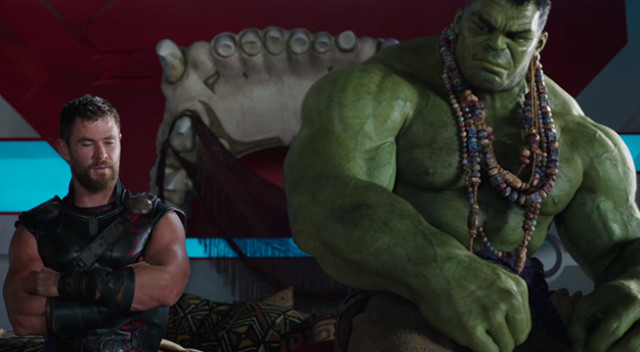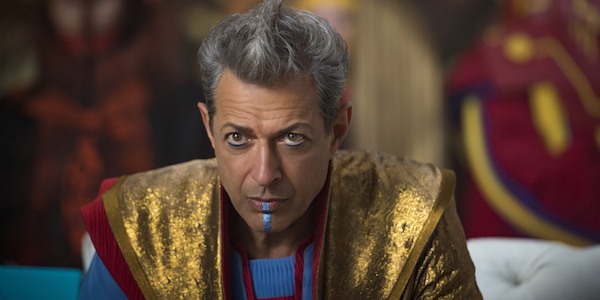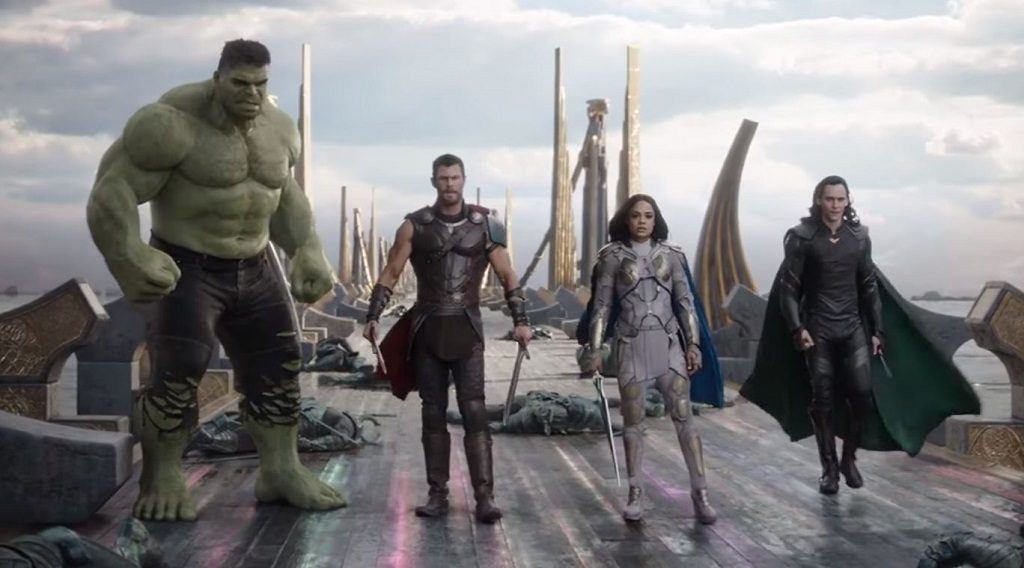Genre: Superhero
Premise: (from IMDB) Imprisoned, the mighty Thor finds himself in a lethal gladiatorial contest against the Hulk, his former ally. Thor must fight for survival and race against time to prevent the all-powerful Hela from destroying his home and the Asgardian civilization.
About: Thor: Ragnarok was projected to make a little over 100 million this weekend. It defied expectations, bringing in 121 million. That’s a full 30 million more than the last Thor film. The Thor-quel (Thor threequel) was a gamble from the get-go. They hired Taika Waititi, a New Zealand director who’d only directed two indie New Zealand films (one of them a mockumentary – so not even a real film). He then came in saying he wanted to make an intergalactic road-trip film with Thor and Hulk. You wouldn’t have been wrong to call Marvel crazy for taking a chance on this guy. And yet, like Marvel always seems to do, they pulled it off. But the gambling doesn’t end there. The writers of this script were guys who’d mostly done TV, video games, or animation writing. None of the three credited writers had a feature credit to their name before this film.
Writers: Eric Pearson and Craig Kyle & Christopher Yost (based on comics by Stan Lee, Larry Lieber, and Jack Kirby)
Details: 2 hours and 10 minutes
I’d been warned going into this movie. People complained that Thor: Ragnarok was too goofy and relied too much on humor.
To these people I say: If this too much humor, then you live a sad miserable existence!
What I love about TR is that Taika Waititi knew exactly what kind of film he wanted to make and he made it. He wanted a fun adventure film. He even said: “I tried to imagine the film that the six year old me would want to see.” And that’s the film he made! I mean, he even has Cate Blanchett cracking jokes on the regular. And it works! Why does it work? Because he stays consistent with it. He sets the tone early on and never deviates.
Tonal problems, which are a major indicator of newbie screenwriters by the way, happen because writers feel that tone should be dictated by whatever they’re feeling in the moment. Feel serious? We’ll do twenty pages of intense conversations. Feel goofy? We’ll do fifteen pages of prat-falls.
Tone gets established in your very first scene. What tone you convey to the audience in your opening is the tone you need to stick with throughout. How does Thor start? With Thor goofily explaining to us how he got trapped in this cage. So for the rest of the script, that is our baseline. That doesn’t mean the script can’t be serious at points. But the level of seriousness can never reach the level of, say, “Detroit.” Your serious floor will be lighter and fluffier.
Moving on, what I REALLY loved about Thor: Ragnarok, is that it’s the best-structured screenplay of all the Marvel movies. To understand why, you have to know the plot.
Ragnarok follows our titular golden-haired god after his father, Odin, dies on Earth. On the way back to his home planet, Thor’s kicked into space during the beam transfer (which is how he got to earth in the first film). He then gets spat out onto some junk planet that exists outside time and space.
That planet is run by the single greatest actor in the history of movies. I’m talking about Jeff Goldbloom, who plays the Grandmaster here. Jeff plucks up Thor and throws him into one of his gladiator tournaments, where it just so happens that he’ll be fighting the Hulk. How the Hulk got here is anyone’s guess. My guess would be: Because it makes a cool movie.
Meanwhile, back on Thor’s planet, his evil older sister, Hela, has taken over in dead dad’s place, raised an army of the undead, and threatens to ruin thousands of years of progress on the planet. That means Thor’s got to convince Hulk to join him, escape this weird non-time planet, and get back to his planet and stop Hela before she can execute her plan.
One of my pet peeves with these Marvel movies is that the narratives are complete disasters. That’s because there are too many characters with too many motivations, which forces us to zig-zag around too much, never allowing a clear story engine to emerge, and often leading us to wonder what the heck is going on until the last 20 minutes.
Thor: Ragnarok keeps things simple. Thor must escape this planet and… wait for it… stop his sister. That’s it! How many times have I told you guys? If you want to write a good screenplay, start with simplicity. To do that, stick with the Scriptshadow basics. GSU. Goal, stakes, urgency.
With that said, Thor altered the format a bit, implementing a nifty “double-goal” approach. FIRST they had to escape the planet. THEN they had to defeat Hela. By instituting two goals instead of one, you keep one goal close enough to the hero that we stay invested. If you only have that one big goal at the end, that means that at minute 45 of the film, your audience is still 60 minutes away from the goal. If you throw in a big goal BEFORE that final goal, now they’re only waiting 30 minutes before something important happens.
Getting back to the “controversy” surrounding the film, some folks have issues with the dialogue, that too much of it is goofy and improvised. The argument goes like this. How important can the story be if actors are allowed to joke around, improvise, and say whatever they want?
For me, overtly humorous dialogue is okay as long as the story’s moving forward. For example, if Thor and Hulk are making fun of each other for three minutes and that’s all the scene is, I have a problem with that. But that’s not what happens. When Thor and Hulk are taking jabs at each other, it’s while Thor is trying to convince Hulk to help him escape the planet.
I will say this, however. Chris Hemsworth isn’t as funny as he or the people surrounding him think he is. There’s been this grass-roots internet campaign promoting Chris Hemsworth as the second coming of Jerry Seinfeld. Let’s be honest. Chris Hemsworth is funny for a hunk. But he’s not going to be stealing gigs from Patton Oswald at The Hollywood Improv anytime soon. So they probably could’ve reined him in a bit.
Speaking of issues, Loki (Thor’s brother, played by Tom Hiddleston) should not have been in this movie. He has little to no effect on the story at all. But the bigger problem is that he’s just not a good character. There should be lots of fresh conflict to explore via Thor and Loki’s sibling rivalry, yet every scene of theirs feels like a slight variations on one of the other 50 scenes we’ve already seen between them. This is one of the issues with these Marvel movies. Once you’ve established a character as a major player in the universe, you can’t get rid of him. It’d be nice if it were like Star Wars. Jar-Jar a bad idea? No problem. We’ll limit him to 3 minutes in the next film.
What I love about Thor: Ragnarok, and most Marvel movies I see, is that I always walk out of them with a smile on my face. I genuinely feel like a happier person when I leave the theater. And this movie left me with the biggest smile of all the Marvel movies yet.
[ ] What the hell did I just watch?
[ ] wasn’t for me
[xx] worth the price of admission
[ ] impressive
[ ] genius
What I learned: If you have to continually fight to find scenes for a character in your story, it probably means that character needs to go. That was clearly the case with Loki. He was so non-essential to the events that almost every scene he was in started with him in the background and someone calling him over. We all fall in love with certain characters we write. But if someone’s not working, you gotta get rid of them.




